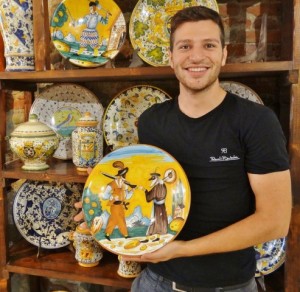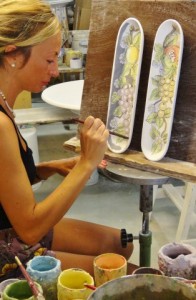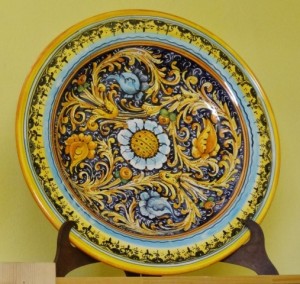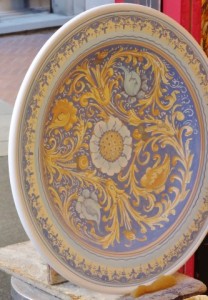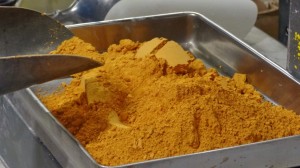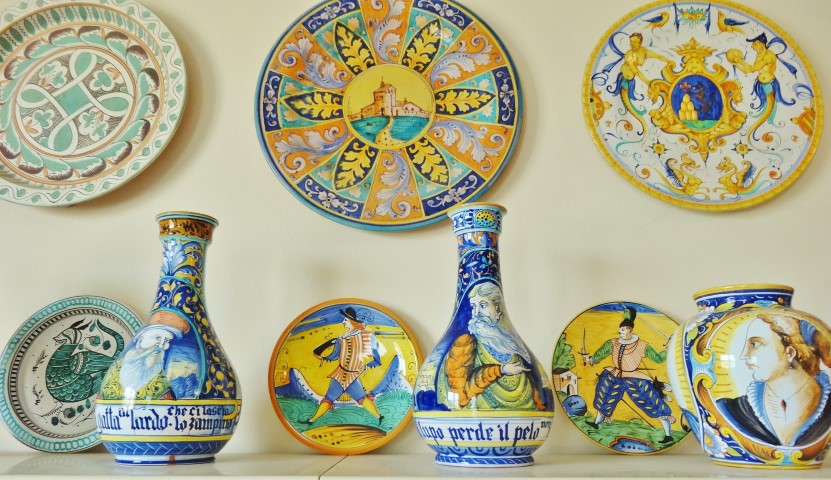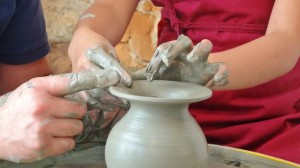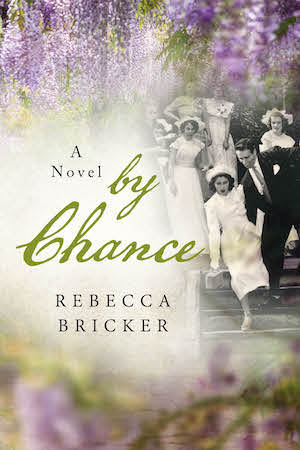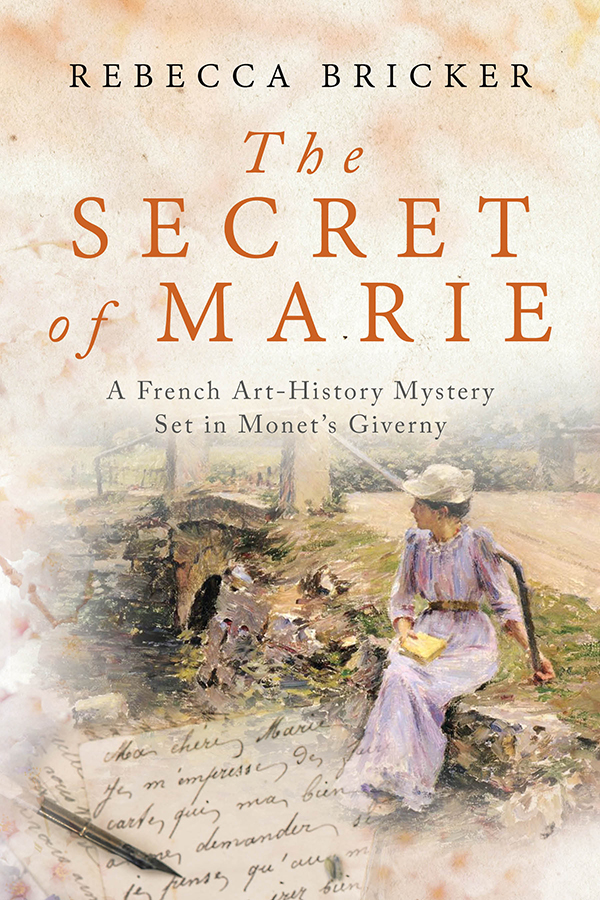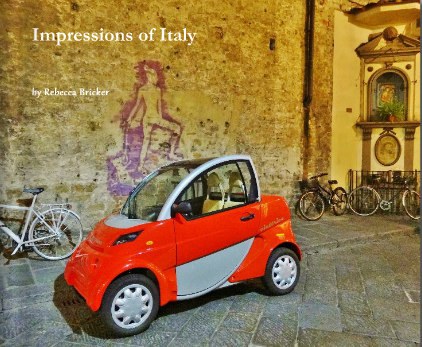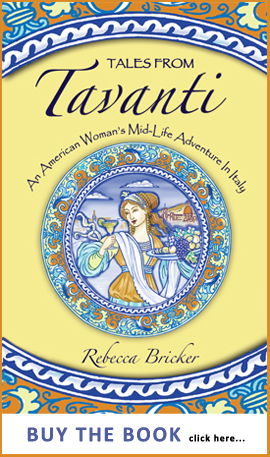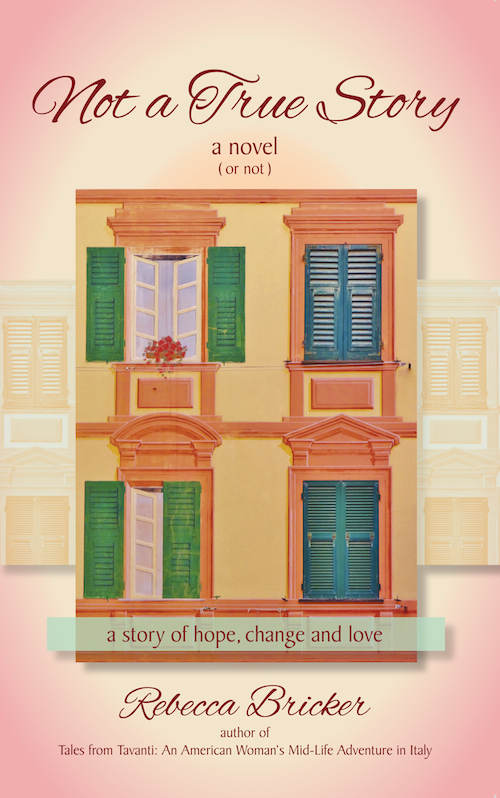 My love of Italian majolica recently took me to a ceramics festival in the legendary Tuscan hill town of Montelupo, where the making of pottery has been part of this village’s life and soul since the Middle Ages.
My love of Italian majolica recently took me to a ceramics festival in the legendary Tuscan hill town of Montelupo, where the making of pottery has been part of this village’s life and soul since the Middle Ages.
The story of majolica begins with Spanish traders who came to Italy in the 13th century with brilliantly colored tin-glazed earthenware that, according to ceramics lore, Italians called majolica because they thought it came from Majorca, which was a major port for trading vessels between Spain and Italy at the time. Italian potters eventually mastered the glazing technique and elevated majolica painting to an art form in the Renaissance.
By the 1400s, Montelupo was a major majolica producer, ideally situated on the River Arno, with direct access to Italian shipping ports. By the 16th and 17th centuries, Montelupo pottery was being marketed in the major cities of Europe and had reached the New World – it has been traced to Cuba and Virginia.
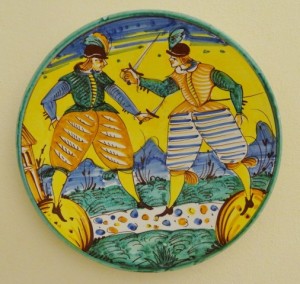 As I walked through the stalls and exhibits at the ceramics festival, I met several local ceramics producers who showed me their work and explained the characteristics of Montelupo ceramics – perhaps best known for a whimsical character who emerged in the 17th century know as the harlequin – or arlecchino.
As I walked through the stalls and exhibits at the ceramics festival, I met several local ceramics producers who showed me their work and explained the characteristics of Montelupo ceramics – perhaps best known for a whimsical character who emerged in the 17th century know as the harlequin – or arlecchino.
He often wears a mask and harlequin-patterned clothes and appears as a robber, peasant, poacher, soldier or a playful rascal. There’s a little joke – or a hint of social satire – to an arlecchino design. Sort of like the painter is winking at you. The background is always yellow (the poor man’s version of gold-imbued plates purchased by the wealthy families of the day) and the sky above, bright blue.
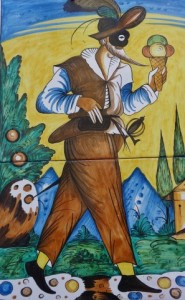 The arlecchino and his cousins are everywhere in Montelupo – at the gelateria, in the subway tunnel under the train tracks. He adorns antique plates in Montelupo’s beautiful ceramics museum.
The arlecchino and his cousins are everywhere in Montelupo – at the gelateria, in the subway tunnel under the train tracks. He adorns antique plates in Montelupo’s beautiful ceramics museum.
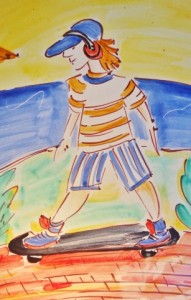 Modern-day ceramics painters in Montelupo give him an updated look. >>>
Modern-day ceramics painters in Montelupo give him an updated look. >>>
He’s the beloved Home Boy.
“Of all the designs in our shop, the arlecchino is my favorite,” says Matteo Mirenda, who, at 21, is embracing his family’s ceramics legacy as the manager of a lovely shop called La Galleria Nuove Forme D’Arte.
Matteo’s father, Salvatore, is a third-generation potter from Sicily, who enjoys giving classes at his magical wheel. I had the great pleasure of taking a lesson from the master recently. Papa is truly a magician with clay, with a wonderful sense of humor. As my pot took shape, spinning in my wet hands, he whispered to me, “Do you feel like Demi Moore?” I laughed so hard I nearly wrecked my pot.
Earlier this week, I toured several facilities in a ceramics production complex on the outskirts of Montelupo, at the gracious invitation of Mario Mori, owner of Ceramiche Mori. He showed me his factory, where, on the day of my visit, artists were painting pieces for a large order to be shipped later this month. The heat of the kilns made the day seem 10 degrees hotter.
I was intrigued to see the plate I had watched him paint at the festival. Here it is before and after the firing…
Mario took me next door to a pottery factory and to a laboratory where pigments are mixed.
I especially enjoyed our tour of Montelupo’s renown ceramics school, Scuola di Ceramica Montelupo Fiorentino, whose students come from around the world. More than a few arlecchini decorate the walls there.
FOOTNOTE: I’m organizing visits to Montelupo, for those who want a Demi Moore moment at Salvatore’s pottery wheel. For my class, I brought a friend and her 7-year-old daughter, who now wants to become a “potteress.”
{ 3 comments }
